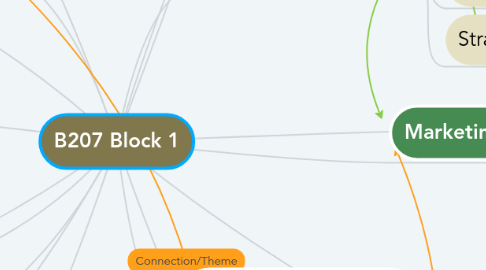
1. Four Phases of Design Process
1.1. Discover
1.2. Define
1.3. Develop
1.4. Deliver
2. Design Thinking
2.1. Reframe Ideas
2.2. Understand User
2.3. No idea is too wild
2.4. Collaborate
2.5. Test Ideas
2.6. See Bigger Picture
3. Design Process
3.1. Concept Generation
3.2. Concept Screening
3.3. Preliminary Design
3.4. Evolution and Improvement
3.5. Prototyping and Final Design
4. New
4.1. Crowdfunding
4.2. Peer-To-Peer Lending
4.3. Micro-Finance
5. Traditional
5.1. Retained Earnings
5.2. Debt Factoring
5.3. Bank Facilities
5.4. Bank Overdrafts
5.5. Working Capital Management
5.6. Leasing
5.7. Venture Capital
6. Strategy
6.1. Performance Objectives
6.1.1. Quality
6.1.2. Speed
6.1.3. Flexibility
6.1.4. Sustainability
6.1.5. Dependability
6.1.6. Cost
7. Raising Finance
8. External Environment
9. Product and Service Design
10. Operations Strategy
11. Economics
12. Analysis of The Market
13. Marketing Process
13.1. Formulation of The Offering
13.2. Mission, Vision and Values
13.3. Implementation, Monitoring and Evaluation
13.4. Strategy Selection
14. Focusing an Offering
14.1. Markets
14.1.1. Consumers or organisations, who need to purchase products in a product class
14.2. Segmentation
14.2.1. Demographic
14.2.1.1. Psycho-graphic
14.2.2. Geographic
14.2.3. Behavioural
14.3. Targeting
14.3.1. Targeting Strategies
14.3.1.1. Undifferentiated
14.3.1.2. Differentiated
14.3.1.3. Concentrated
14.3.1.4. Customised
14.4. Positioning
14.4.1. Factors of Successful Positioning
14.4.1.1. Clarity
14.4.1.2. Consistency
14.4.1.3. Credibility
14.4.1.4. Competitiveness
15. Marketing Research
15.1. Process
15.1.1. Research Planning
15.1.1.1. Exploratory Research
15.1.2. Refining The Research Design
15.1.3. Main Research Collection
15.1.4. Analysis and Interpretation
15.1.5. Reporting of Findings
16. Marketing Mix
16.1. Product
16.1.1. Types of product
16.1.1.1. convenience
16.1.1.2. Shopping
16.1.1.3. Speciality
16.1.1.4. Unsought
16.2. Place
16.2.1. Distribution Channel
16.2.1.1. Traditional
16.2.1.1.1. Manufacturer
16.2.1.1.2. Wholesaler
16.2.1.1.3. Retailer
16.2.1.1.4. Consumer
16.2.1.2. Vertical Marketing System
16.2.1.2.1. Manufacturer, Wholesaler, Retailer
16.2.1.2.2. Consumer
16.3. Promotion
16.3.1. Communication Techniques
16.3.1.1. Advertising
16.3.1.2. Personal Selling
16.3.1.3. Direct Marketing
16.3.1.4. Digital Marketing
16.3.1.5. Sales Promotion
16.3.1.6. Sponsorship
16.3.1.7. Public Relations
16.4. Pricing
16.4.1. Types of Pricing
16.4.1.1. Cost-Based Pricing
16.4.1.2. Competitor-Based Pricing
16.4.1.3. Customer-Based Pricing
17. Marketing Environment
17.1. Macro-Environment
17.1.1. STEEPLE
17.1.1.1. Social
17.1.1.2. Technological
17.1.1.3. Economic
17.1.1.4. Eviromental
17.1.1.5. Political
17.1.1.6. Legal
17.1.1.7. Ethical
17.2. Micro-Environment
17.2.1. Public
17.2.2. Competitor
17.2.3. Customer
17.2.4. Marketing Intermediaries
17.2.5. Suppliers

